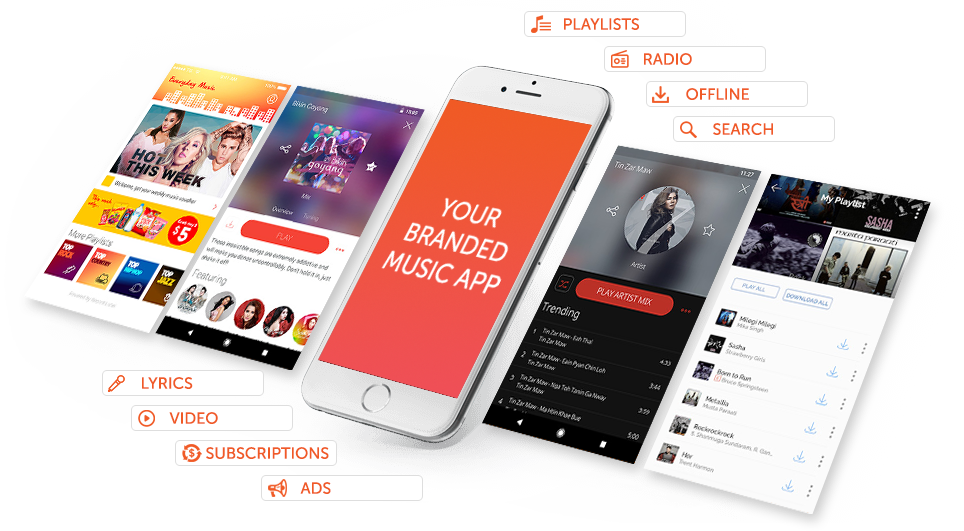The fitness space has been going through a significant transition since 2018 with the emergence of connected devices targeted at the home exercise market. The lockdown experienced in 2020 accelerated this transition with the advent of live and on-demand classes to groups of fifty plus. The benefits for all are clear, no more travelling to the gym or struggling to book a class and a much larger audience.
But what about the music? User experiences vary from no music at all to a request for users to select a playlist on Spotify, to instructors playing music without licensing, generating a significant business risk.
Let’s dig through the challenges and solutions around music and streaming in the digital fitness industry.
in : Music & Brands, Music & Technology
CEO Con Raso shares his opinion on how User Generated Content (UGC) can be used to impact your business or brand when paired with music.
A very young population, a smartphone rate that is exploding, and an undeniable musical wealth: Africa has never been so courted, even in small French-speaking countries where major labels are coming, to invest in streaming.
The time when pirate tapes and CDs were sold in the street under photocopied packaging is gone! Listening to online music and the arrival of the 3G connection in capital cities is changing everything.
"Everyone knows that the market will explode. There is talk of $80 million for the streaming market in 2020 in Nigeria", says Jean-Noel Tronc, from SACEM (Society of Authors, Composers and Publishers of Music) in France.
When you decide to create your own music streaming service, you have two options: develop it yourself (internally) or outsource your creation.
Each of the two options has its advantages and disadvantages. But here we will explain why using a service provider specialising in the development of music streaming services or platforms is an excellent alternative including costs, time, quality, security and expertise.
In today’s digital and tech-focused world, more companies are realising that marketing is no longer about simply placing ads in print magazines or between television episodes.
Businesses have discovered the promotional power of an age-old art form: music. And they are incorporating entertainment as a key piece of their mobile marketing efforts.
Companies are approaching using music for marketing in a variety of ways, such as Verizon pairing with Jamie Foxx to create exclusive tracks and videos. While others have sponsored live events and festivals (such as T-Mobile, which sponsored Coachella) in order to capture their target audience.
In today’s on-demand world where everyone has access to information 24/7 through their smartphones, driving customer engagement means having the ability to quickly respond to consumers’ needs and wants through their mobiles. Throughout the years, I have seen how music plays a significant role in creating a long-lasting spark between consumers and brands. Traditional marketing models have flipped to focus on creating a memorable experience that puts customers in control as music is now streamed and users expect it to be free.
Streaming radio service Pandora recently announced the launch of a lower-priced interactive streaming platform, the result of its purchase of Rdio last year. Unfortunately, the launch might not have the result many in the music business are hoping for; while it will surely convert a handful of listeners who couldn’t afford the standard $9.99 USD per month price, it won’t move the needle in a meaningful way. That’s because the hardest jump for people to make is not from $5.99 to $9.99 -- it’s from zero to a penny.
With the announcement of Pandora’s partnership with Ticketfly to enable in-app ticket purchases, it appears that streaming services have started to realise that they can’t survive on music listening alone.
Spotify has deals in place with Songkick and Merchbar, and other services will likely follow suit over the course of the coming year.
While these steps are laudable and needed, they are only the tip of the iceberg. For streaming services to survive and thrive, as well as compete with one another, they need to greatly expand their commerce offerings.
With a population of over 250 million, big companies have their eyes set on Indonesia.
Statistics show that the total number of mobile phone users for 2017 is expected to rise to a whopping 173 million, making this country an attractive territory for mobile marketing.
But while Indonesia is a promising market because of the density of its consumers on mobile, geography is a hurdle for all marketers.
With over 17,000 islands and more than 726 dialects spoken across the archipelago, how can brands reach this seemingly fragmented audience?
The influx of capital investments in emerging markets creates massive job opportunities, which in return gives millions of consumers new purchasing power. And with the growth surge of smartphone penetration in Southeast Asia, this region has undoubtedly became one of the most attractive markets for mobile and internet marketing. Throughout the years, I’ve seen how big multinational brands launched aggressive campaigns to win the race of capturing these territories first. But while “first strike” is important, it is equally significant to “strike the right note” with these consumers.











